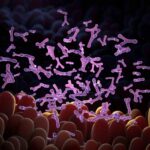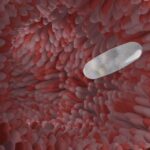Astronauts often face immune problems, skin rashes and other inflammatory conditions while in space. Now, researchers have found that these issues may be linked to the environment of spacecraft. Their analysis revealed that the International Space Station has much lower microbial diversity than human-built environments on Earth, with most of the microbes onboard being human-derived.
The findings, published in Cell, suggest that introducing more natural microbes could improve astronauts’ health. “Future built environments, including space stations, could benefit from intentionally fostering diverse microbial communities that better mimic the natural microbial exposures experienced on Earth, rather than relying on highly sanitized spaces,” says study co-first author Rodolfo Salido of the University of California, San Diego.
Previous studies on the International Space Station have shown that human-associated microbes dominate the environment, and some microbes and chemicals in space are at higher levels than on Earth.
To better examine the microbial and chemical environment on the International Space Station, Salido and his colleagues collected and analyzed more than 800 environmental surface samples from different sections of the spacecraft.
Microbial diversity
While all sections of the spacecraft share similar environmental conditions, microbial diversity differs across sections. Rather than by temperature, radiation or other environmental factors, this variation appears to be influenced more by human activity. For example, the researchers found food-related microbes in dining areas and waste-related microbes in the hygiene compartment.
Certain common microbes, including Staphylococcus and Pantoea, were present at high level across the spacecraft. Most of these bacteria came from human skin, with minimal contributions from sources such as soil and water.
The analysis also found more than 1,000 antibiotic resistance genes and several multidrug-resistant pathogens, such as Klebsiella pneumoniae.
Beneficial microbes
The analysis also showed that the International Space Station has low microbial diversity, which is similar to other urban environments but different from rural homes or natural settings.
The findings suggest that introducing environmental microbes, such as those from soil, could help make the International Space Station’s microbial community more similar to Earth’s outdoor environments, the researchers say.
“If we really want life to thrive outside Earth, we can’t just take a small branch of the tree of life and launch it into space and hope that it will work out,” Salido says. “We need to start thinking about what other beneficial companions we should be sending with these astronauts to help them develop ecosystems that will be sustainable and beneficial for all.”











